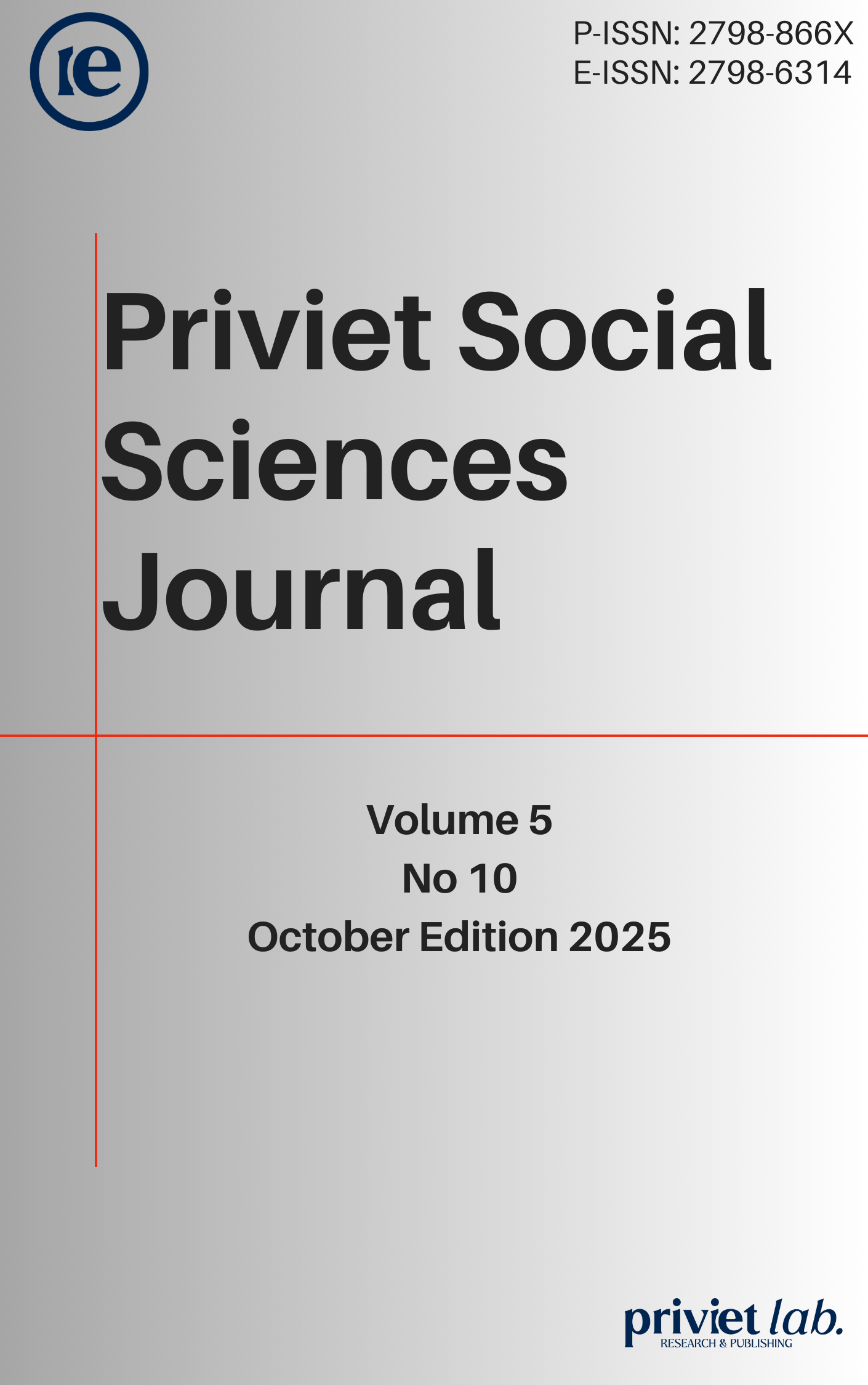Improving the effectiveness of performance appraisal systems in public sector administrative divisions
DOI:
https://doi.org/10.55942/pssj.v5i10.598Keywords:
BARS, Performance, Performance Assessment BLUD Employees, Public SectorAbstract
This study explores the suboptimal implementation of performance appraisals for BLUD employees in public hospitals. This research aims to identify existing issues and formulate draft guidelines to enhance the appraisal process. Using a qualitative approach, data were collected through interviews, observations, and document analysis. The analysis refers to Gary Dessler’s book “Human Resource Management” to address the lack of accurate measurement in current practices. The findings reveal several challenges, including the absence of performance dialogue, difficulties in validating performance realization data, subjective behavioral assessments, and unclear evaluation criteria. In response, this study proposes guidelines to serve as a reference for all stakeholders involved in the appraisal process. Additional recommendations include the use of shared digital storage (e.g., Google Drive) for performance documentation and the development of behavior assessment instruments based on the BARS method to improve objectivity and ease of evaluation. These efforts are expected to support a more accurate and accountable performance appraisal system
References
Asmaudi, & Iing Pamungkas. (2023). Application of Behaviorally Anchor Rating Scale (BARS) Method to Assess Employee Performance at Diskoperindag Aceh Jaya. Jurnal Inotera, 8(2), 385–392 https://doi.org/10.31572/inotera.Vol8.Iss2.2023.ID216
B. Miles, M., & Huberman, A. 1994. Qualitative Data Analysis (2nd ed.). California: SAGE Publications Ltd.
Daniali, S. M., Rodionov, D., & Khortabi, F. M. (2021). Determination of Evaluation Indicators and Establishment of Employees Performance Evaluation System. IBIMA Business Review, 1. https://doi.org/10.5171/2020.556050
Dessler, G. (2013). Human Resource Management. (13th ed.). New Jersey: Pearson Education.
Dessler, G. (2010). HUMAN RESOURCE MANAGEMENT.
Georganta, E., & Brodbeck, F. C. (2018). Capturing the four-phase team adaptation process with Behaviorally Anchored Rating Scales (BARS). European Journal of Psychological Assessment. https://doi.org/10.1027/1015-5759/a000503
Haerul Anam, M. (2025). The Effect Of Leadership, Motivation And Discipline On The Performance Of Employees At The Makassar I State Treasury Service Office. https://doi.org/10.58468/remics.v1i1.8
Halsa, D., Hawignyo, H., & Supriyadi, D. (2022). The Role of Human Resource Management in Organizations. J-MAS (Journal of Management and Science), 7(2), 663. https://doi.org/10.33087/jmas.v7i2.528
Holland, J. R., Arnold, D. H., Hanson, H. R., Solomon, B. J., Jones, N. E., Anderson, T. W., ... & Ciener, D. A. (2022). Reliability of the Behaviorally Anchored Rating Scale (BARS) for assessing non-technical skills of medical students in simulated scenarios. Medical Education Online, 27(1), 2070940. https://doi.org/10.1080/10872981.2022.2070940
Irfan Malik, A. (2023). Title: Impact of Emotional Intelligence on Employee Performance: Examining the Mediating Role of Employee Engagement Impact of Emotional Intelligence on Employee Performance: Examining the Mediating Role of Employee Engagement. Journal of Workplace Behavior (JWB), 4(2). https://charisma-jwb.com/index.php/jwb https://m.asianindexing.com/article.php?jid=1725&id=175402
Jabo, R., & Sunaryanto, L. (2021). Analysis of Human Resources (HR) Performance at PT. Rumeksa Mekaring Sabda. AGROINFO GALUH Student Scientific Journal. Vol. 8. p 819-832.https://scholar.archive.org/work/v722mxfvbvb6rih4rzaqcztsvu/access/wayback/https://jurnal.unigal.ac.id/index.php/agroinfogaluh/article/download/5815/pdf
Minister of Health Regulation Number 20 of 2014 concerning the Management of Non-Civil Servant Employees in Ministry of Health Work Units Implementing the Public Service Agency Financial Management Pattern. https://peraturan.bpk.go.id/Details/117560/permenkes-no-20-tahun-2014
Ministerial Regulation of the State Apparatus Empowerment and Bureaucratic Reform Number 6 of 2022 concerning the Performance Management of State Civil Apparatus Employees. https://peraturan.bpk.go.id/Details/202232/permen-pan-rb-no-6-tahun-2022
Ningrum, R. S., & Ahmad, F (2023). Analysis of Widyaiswara Training Needs in Blended Learning Methods at PT. X. https://pdfs.semanticscholar.org/5bdb/408b31808f2dd11d41e7067c48682b2ef0fb.pdf
Nkeobuna, J., & Ugoani, N. (n.d.). Employee Career Development And Performance Effectiveness https://papers.ssrn.com/sol3/papers.cfm?abstract_id=5311856
Ozgun, A., Tarim*, M., & Zaim, S. (2019). Using Employee Perceptions for Organizational Performance Assessment. 451–460. https://doi.org/10.15405/epsbs.2019.10.02.41
Regulation of the Minister of Health of the Republic of Indonesia Number 1 of 2019 concerning Guidelines for Employee Performance Assessment within the Ministry of Health. Peraturan.bpk.go.id: https://peraturan.bpk.go.id/Details/138678/permenkes-no-1-tahun-2019
Revathi, S. (2024). Training and Development - Improving Employee Performance. International Journal of Science and Research (IJSR), 13(6), 558–562. https://doi.org/10.21275/sr24604160809
Salam, R. (2021). The Importance Performance Assessment And Its Impact On Improving Performance Of Public Service Organizations In South Tangerang City. Sosiohumaniora, 23(2), 226. https://doi.org/10.24198/sosiohumaniora.v23i2.31963
Suryadi, S., Afifudin, A., & Hayat. (2023). Effectiveness Of Performance Assessment In Improving Employee Work Productivity In Benua Kayong District, Ketapang Regency, West Kalimantan. Journal Publicuho, 6(2), 390. https://doi.org/10.35817/publicuho.v6i2.122
Tr, I. (2025). Exploring Employee Engagement in Performance Management. https://dx.doi.org/10.2139/ssrn.5352869
Zheng, M. (2024). Job satisfaction, employee engagement, and service employee performance: Basis for high-performance organizational culture framework. International Journal of Research Studies in Management, 12(11). https://doi.org/10.5861/ijrsm.2024.1292
Zulfikar, R. (2025). Work Performance Assessment And Its Relationship In The Company.
Downloads
Published
How to Cite
Issue
Section
License
Copyright (c) 2025 Moch Yusuf Giri Nugraha, Ulfa Rahma Putri, fandi ahmad

This work is licensed under a Creative Commons Attribution 4.0 International License.

















